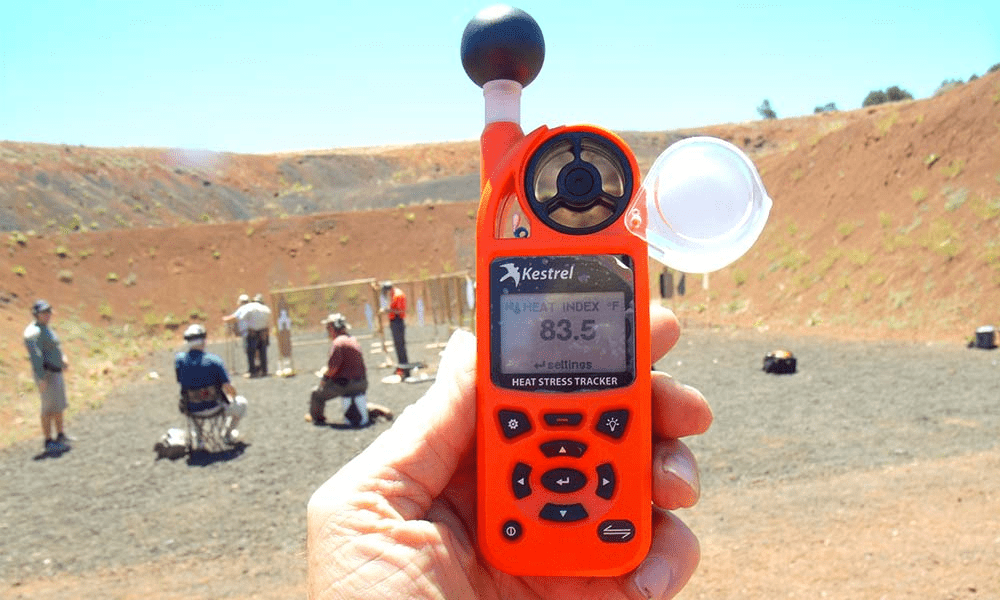5 tips for managing heat stress in the workplace
With temperatures rising as we head in to the summer months, it is becoming increasingly important to manage heat stress in the workplace. Employers, managers, and health and safety personnel are responsible for tracking heat and other weather parameters to ensure the wellbeing of their staff.
Heat stress is particularly prominent in industries such as construction, agriculture, fire-fighting, emergency services, military, sport and the environment. The CDC describes how “workers who are exposed to extreme heat or work in hot environments may be at risk of heat stress. Exposure to extreme heat can result in occupational illnesses and injuries. Heat stress can result in heat stroke, heat exhaustion, heat cramps, or heat rashes”. Here are 5 ways you can keep your employees safe:
Monitor working conditions
A variety of heat stress trackers are available, including the Kestrel 5400.The Kestrel 5400 is a highly accurate, handheld device that monitors heat, humidity, wind speed and direction, pressure and altitude. It provides a heat stress index making it the ideal product when determining safe working conditions, setting rest breaks and maximising personnel performance. The WBGT data does not require water making it incredibly easy to use.
By adding Bluetooth connection (LiNK) to your device, you can record live data and send it to your device in real time. The free Kestrel LiNK App for iOS/Android puts crucial information at your fingertips with remote mobile device viewing of real-time readings from your Kestrel 5000 Series Meter.
The Kestrel 5400 is the ultimate solution for those looking for an easy, affordable setup and want the option of alerts at critical thresholds. It trumps the Kestrel 3000 by providing data on crosswinds, pressure, altitude and many other unique parameters. The Kestrel 5400 is IN STOCK at RPR now.
Sign up to the newsletter to hear more about uses of the Kestrel 5400 next week.
Learn more about the Kestrel 5400 here
Provide training resources
As well as tracking heat, employers can provide training resources so that their staff know when it is safe or unsafe to work. Employers can provide information on signs of heat stress, how to administer first aid and appropriate attire for working in tough conditions.
Acclimatise
Training resources are a good place to start, but sometimes the heat can still be a shock to the system. It’s important for employers to learn the significant benefits of acclimatising to warm conditions. Acclimatising provides a physiological advantage in warmer conditions as employees become used to the heat and the way it affects them. The CDC recommends new starters should spend 20% of their first day in the heat, followed by no more than a 20% increase each day. Employees should be supervised, particularly if they are not physically fit.
Hydrate, hydrate, hydrate
It goes without saying that water is your best friend in the heat. We all know that 2 litres of water a day is the standard when it comes to hydration – but experts agree that 1 cup of water every 15-20 minutes is more appropriate for warm conditions, with the need for electrolytes if working for greater than 2 hours. In addition to this, water should be potable (15 degrees or less) and made accessible to the work area.
Take a break
Don’t be afraid to take a rest from work. Long exposure in the heat is both dangerous and draining. You are more likely to be productive with regular breaks out of the sun. Find shade and take some time to hydrate. Employers should be proactive in allowing rest breaks and should assign more frequent breaks to those who are unfit or not yet acclimatised.

For more information on the Kestrel 5400 view our website or call our sales team at +44 (0) 1590 641223. sales@rpr.co.uk.
